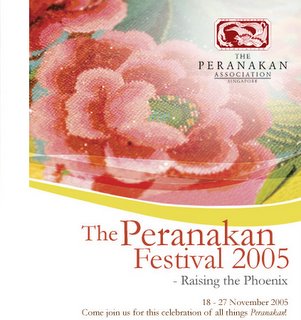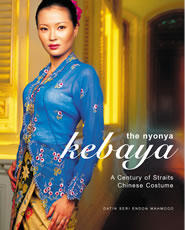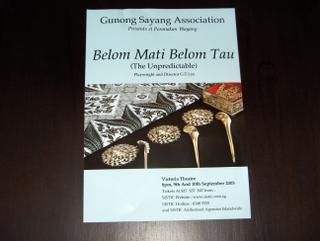Wayang Peranakan started from the influence of the Malay Bangsawan (Malay Opera) trying to ascertain the time period as to when it all started would be difficult. Bangsawan rose to popularity in the Straits Settlements (Singapore, Malacca & Penang) , Malaya (Malaysia) and the Dutch East Indies (Indonesia) from the 1880's (Bangsawan: A Social and Stylistic History of Popular Malay Opera by Tan Sooi Beng - Oxford Unversity Press, 1993) As the Peranakans enjoy watching the Bangsawan naturally given time they adapted it and started producing thier very own Wayang Peranakan.
Wayang Yap Chow Thong and Opera Stamboul could have been the earliest owned Chinese bangsawan troupes as press advertisements were found in the local papers Straits Echo as far back as May 1904.
With its popularity many groups were formed such as the Wales Minstrels Party, Merrilads Musical Party(1930's), Oleh Oleh Party (Jan 1932), and Kumpulan Peranakan Singapura, staging musical shows, music, song, dance and drama became a part of our vibrant culture.
The themes of the wayang centre around the family. Domestic squabbles, matriarchal domination and young love which are spun in a web of intrigue with surprising twists and turns of the plot, and finally concluding with a happy ending. Using local humour and the quick wit of the performers injecting comedy and drama, the Peranakan stories and characters often mirror and amplified the real life off stage. Tidak Berdosa, Rusia, Kaseh Ibu Tiri, Nyai Dasima, and Naseb Si Buta are some of the popular old plays.
By the 1960's all this came to an end there was almost a 20 years wait until Felix Chia's Pileh Menantu (Choosing a Daughter in law) was staged in 1984 for the Arts Festival. With its sucess a new spark of life was given to Wayang Peranakan. And from then on Gunung Sayang Association produce a play each year.
In 2001 in celebration of its 100th Anniversary the Peranakan Association presents Dah Sa Chupak Tak Boleh Sa Gantang. In 2002 a totally new style of Wayang Peranakan was produced by the Association titled Bibik Behind Bars (All about Bibiks and thier foundness of playing Cherki).The play was even recorded and telecast on TV at Arts Central Channel. In its resounding sucess Bibiks Goes Broadway was produce.
In 2005 The Main Wayang Company was founded and it makes its debut performance Bibiks In Parliament and in October 2005 they will will be staging Bibik Chari Menan 2. Main Wayang also produce Music CD's and VCD's of thier past productions.
Past Plays by Gunung Sayang Association (VCD's of past productions available for sale)
1985 - Buang Keroh Pungot Jernih (Let Bygones Be Bygones)
1986 - Lepas Jambatan Buang Tongkat (The Ingrate)
1986 - Menyasal (Regrets)
1987 - Zaman Sekarang (Times Have Changed)
1989 - Biji Mata Mak (Apple Of His Mother Eyes)
1990 - Tak Sangkah (Unexpected)
1990 - Sudah Di Janji (Fated)
1992 - Nasib (Fate)
1993 - Salah Sangkah (Misunderstood)
1995 - Manis Manis Pait (Bitter Sweet Memories)
1996 - Kalau Jodoh Tak Mana Lari (Destiny of Love)
1997 - Bulan Pernama (An Auspicious Full Moon)
1999 - Janji Perot (Pre-Birth Pact)
2000 - Cheh It Chap Goh (Every Cloud Has A Sliver Lining)
2001 - Hujan Balek Ka Langit (The Impossible)
2002 - Anak Udang Anak Tenggiri (Blood Is Thicker Than Water)
2003 - Kipas Cendana (The Sandalwood Fan)
2004 - Buang Keroh Pungot Jernih (Let Bygones Be Bygones)
2005 - Belom Mati Belom Tau (The Unpredictable)


 My grandmother style of Tauhu Masak Titek the prawns are kept whole and minced pork are made into pork balls. Tauhu Masak Titek is best eaten with steamed white rice and sambal belachan.
My grandmother style of Tauhu Masak Titek the prawns are kept whole and minced pork are made into pork balls. Tauhu Masak Titek is best eaten with steamed white rice and sambal belachan. 






